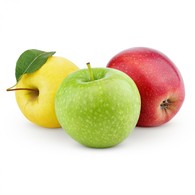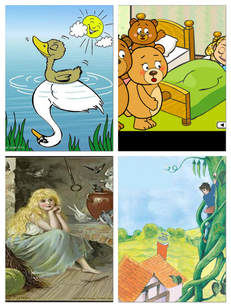 Here we go again. Back to the farm. Reluctantly, I might add. It’s just that my experiences were like episodes from the Twilight Zone. The potato planting was the first in a long line of bizarre happenings, a few of which you may have read about in previous blogs. A little background is necessary to set the scene and build up a modicum of suspense leading to the potato event. The day moving to the farm was the day my daughter was born. Since I never really wanted to move to that farm, I opted to remain in hospital until my insurance ran out. Once there, it was worse than imagined. To give you an idea, I found myself in this 12 room farmhouse with no insulation; a big forced hot air furnace sitting in the middle of the 18 ft. living room which only heated the second floor; 7 dogs in the garage which the previous owners left making 8 with our own dog and the kitchen stove blew up the first weekend there. And so began my 7 years on the funny farm (no laughing matter, however ). We had taken up residence the first week of May. The incident about which I am sharing occurred 7 weeks afterwards. Until that time my entire experience of gardening was buying produce at a farmers’ market. You can imagine the shock when the following directive was issued. I was to plant 8 rows of potatoes on a plot of land about the size of an NBA basket ball court. My reaction – what else but a total melt down. Fortunately, shortly after moving in, I met a woman about my age who lived down the hill. We became fast friends which was a blessing. I phoned her in my frantic, freaked out state. She came right over. I cried and complained. She consoled and commiserated. Suddenly I recalled seeing a bottle of banana brandy in the cupboard. No idea how or when it got there. No one I knew would have purchased it. My friend and I concluded it had materialized for just such a situation. So we accepted the gift and promptly de-materialized it. We soon discovered that banana brandy had mystical powers. I put the baby in her carriage. We gathered up the potato seed, some hoes and shovels. The three of us set out for the basketball court. My daughter slept peacefully while my friend and I dug and hoed over and over and over until all 8 rows were planted When the green leaves of sprouted potatoes poked through the ground, what we thought were eight beautiful, straight rows, were not. Here is the piece de resistance: we had some visitors who were scholarly and erudite. They toured the property noting, in particular, the potato patch. They congratulated us on creating such a remarkable topographical map of the Himalayas. Go figure. Comments are welcome.
1 Comment
 Tis the season. Apple season, that is. One of my favorite moving into autumn things is the arrival of the new crop of apples. Love their sweet-tart flavor and crisp texture. Yummy. I’m not going into the gazillion things one can do with apples. You already know that. You are no doubt also familiar with the gazillion apple idioms - an apple a day keeps the doctor away, the apple doesn’t fall far from the tree, the apple of my eye, one bad apple, apples and oranges, etc., etc., etc. What you might not know is that there are a number of unusual facts about apples. Of course, I could not resist sharing some of them with you. Here goes. If you are not a fan of the apples in your local market, don’t fret. You have options. There are 7500 apple varieties around the world. Crab apples are the only apple native to the U.S. China is the largest producer of apples. Apples are 25% air making them lighter than water. Thus, they can float. In Norse mythology apples are the symbol of eternal youth. Based on the evidence I’ve gathered from eating apples over a few decades, it is definitely a myth. Apple seeds contain the deadly poison cyanide. Don’t worry. It would take chewing about 200 seeds or eating 10 apple cores to have an affect. Pomology is the science of apple growing. BTW, apples are part of the rose family like pears, peaches, plums and cherries. Two-thirds of the fibre and many anti-oxidents in apples are found in the peel. Apples contain no fat, sodium or cholesterol. They do contain boron which helps mental alertness. Archeological evidence shows apples to have been around since 6500BC As American as apple pie? Not. The first apple pie came from England in the 1300’s. Seems they didn’t have enough metal containers to hold the apples while cooking. They made a container of flour, lard, water. It was not supposed to be eaten, but they found the crunchy container delicious. Despite advances in technology, most apples are still hand-picked. An apple tree can live over 100 years. You’re gonna love this. Some people actually can have a fear of apples. Trust me, it is a real thing. This particular fear is called – can you say malusdomesticaphobia? Having said that (maybe), I will pick up my apples and go home. Comments are welcomed.  Ah, yes. Those were the ‘good old days.’ How often have you heard someone say that or said that yourself? Recently referring to those good old days gave me pause. I decided to do a semi deep dive about those days. It’s such a great blanket phrase we throw out there when we are not too pleased with our current situation. That phrase begs several questions. So let’s begin diving. How old are those good old days? Sometimes they are just a few weeks or months ago before some difficult changes or event occurred. Sometimes they are part of our youth. Sometimes they are prior to the digital age when people actually spoke to each other face to face. We all have a different reference point for the good old days and what made them good for us. Next there is the question, what was good about those old days? Because what is good is a personal perspective, our answers would likely be quite different based on that personal interpretation. Here’s where this gets interesting. How accurate are our memories and recall? It has to do with how our brains work in terms of encoding and retrieving information. We tend to think that memories are stored in our brains just as they are in computers. Once registered, the data are put away for safe-keeping and eventual recall. The facts don’t change. But neuroscientists have shown that each time we remember something, we are reconstructing the event, reassembling it from traces throughout the brain. Psychologists have pointed out that we also suppress memories that are painful or damaging to self-esteem. We could say that, as a result, memory is unreliable. We could also say it is adaptive, reshaping itself to accommodate the new situations we find ourselves facing. For most of us that usually means we recall a rosier past than we actually had. The who, what, where of a memory tends to be pretty accurate. The other details, not so much. Again, we ask, “Just how good were the good old days?” Answer: The good old days are as good as we interpret them to be. So why not simply enjoy all the pleasure we get from what our memories conjure up for us? Comments are welcome.  Right off the top I want to say I’ve always been a proponent of respect, consideration, kindness to others regardless of race, religion, ethnicity, etc. It’s about all of our common humanity. Something that has gone a little too far, in my opinion, is political correctness. I think we have gone overboard trying not to demean, disparage or offend anyone. For some really blatant political incorrectness just take a look at traditional fairy tales,. To have some fun with this, I found a few that have had a politically correct make-over. The following tales were rewritten by Emily Fairbairn in The Sun in the UK. The Aesthetically Different Duckling Beauty is in the eye of the oppressor, it would seem. AN aesthetically different duckling is excluded by his community, who subject him to a series of microaggressions based solely on his cosmetically challenged identity. With such oppression causing the duckling to suffer anxiety and confidence issues, he resorts to isolating himself. He later self-identifies as a swan, and empowers himself by affirming his rights and identity beyond the standardised confines of traditional farmyard role stereotypes - and lives happily ever after Goldilocks and the Marginalized Bears A PRIVILEGED white girl appropriates the private space of a marginalised bear family who are forced to live on the fringes of a socio-economically iniquitous community. Ignorant of their cultural traditions and norms, she exploits their limited food source, then violates their sleeping arrangements. When the bears return home they are legitimately outraged by the girl’s problematic behavioural issues, and move to no-platform her. . Jack and the Locally Sourced, Organic Beanstalk Jack won't climb anything other than organic plants. DUE to the failed capitalist system, a NEET, or young person Not in Education, Employment or Training, exploits a captive animal by exchanging it for some beans. Climate change causes growth abnormality in the beans, and the NEET climbs a huge beanstalk, encountering a person of alternative size who discriminates against the NEET on grounds of nationality, implying that an Englishman’s blood may have an odd odour. On discovering his oppressor is part of the monied elite, the NEET carries out a swift redistribution of wealth. Cinderella, The Modern Slavery Victim MODERN slavery victim Cinderella is exploited by her primary carers. A fairy godperson attempts to improve Cinderella’s life chances by temporarily liberating her from domestic servitude. Cinderella then has a liaison with Prince Woke, but flees for fear of being slut-shamed. Prince Woke seems to be a feminist ally when he helps Cinderella flee her background of emotional abuse, but turns out to be a misogynist when he forces her into the outdated patriarchal institution of marriage. There you have it. PC at it’s best, or worst. Comments are welcomed. |
Archives
July 2024
Categories
All
|

 RSS Feed
RSS Feed
